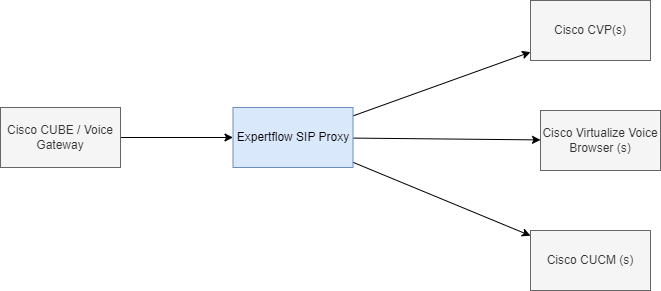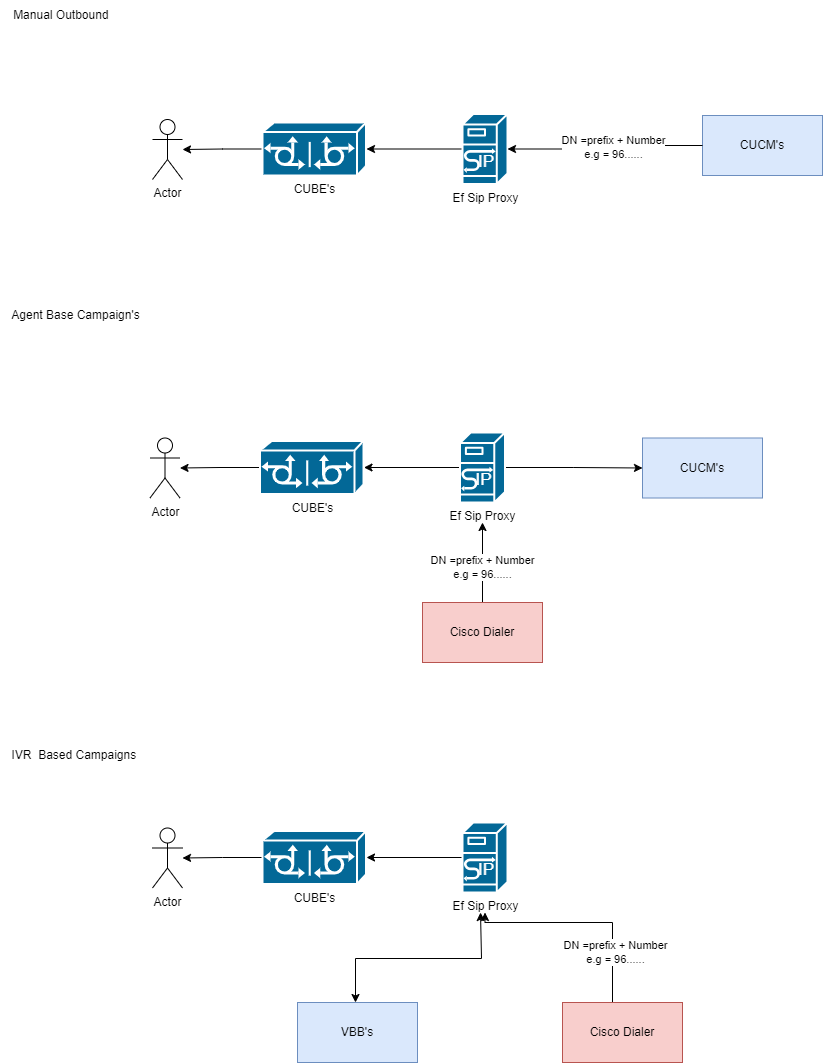CX SIP Proxy as a CUSP replacement
CX SIP Proxy can be used as a replacement of Cisco Unified SIP Proxy (CUSP). See the following table for a feature comparison.
Feature | Cisco CUSP | Expertflow CX SIP Proxy |
|---|---|---|
Proxy for SIP unified communications signaling |
|
|
Signaling support |
|
|
Address resolution |
|
|
TCP, User Datagram Protocol (UDP), and Transport Layer Security (TLS) |
|
|
Redundancy and high availability options |
|
|
SIP header manipulation |
|
|
Support for IPv4 and IPv6 |
|
|
Call admission control |
|
|
Dynamic call routing and load balancing |
|
|
QoS support |
|
|
Monitoring and reporting through syslog, SNMP, and SNMP traps |
|
|
Inbound Scenario:
For inbound calls, the EF SIP Proxy, positioned after the Cisco Cube, directs SIP traffic to various destinations like CVPs, VBB, and CUCMs. It evaluates the status and load of each destination, ensuring calls are efficiently routed to the least loaded and operational component.
Architecture Diagram :
Outbound Scenario:
In outbound situations, the EF SIP Proxy is crucial in three scenarios: manual outbound, agent-based campaigns, and IVR-based campaigns. It effectively manages load balancing for Cisco Cube in these outbound processes.
Architecture Diagram :


